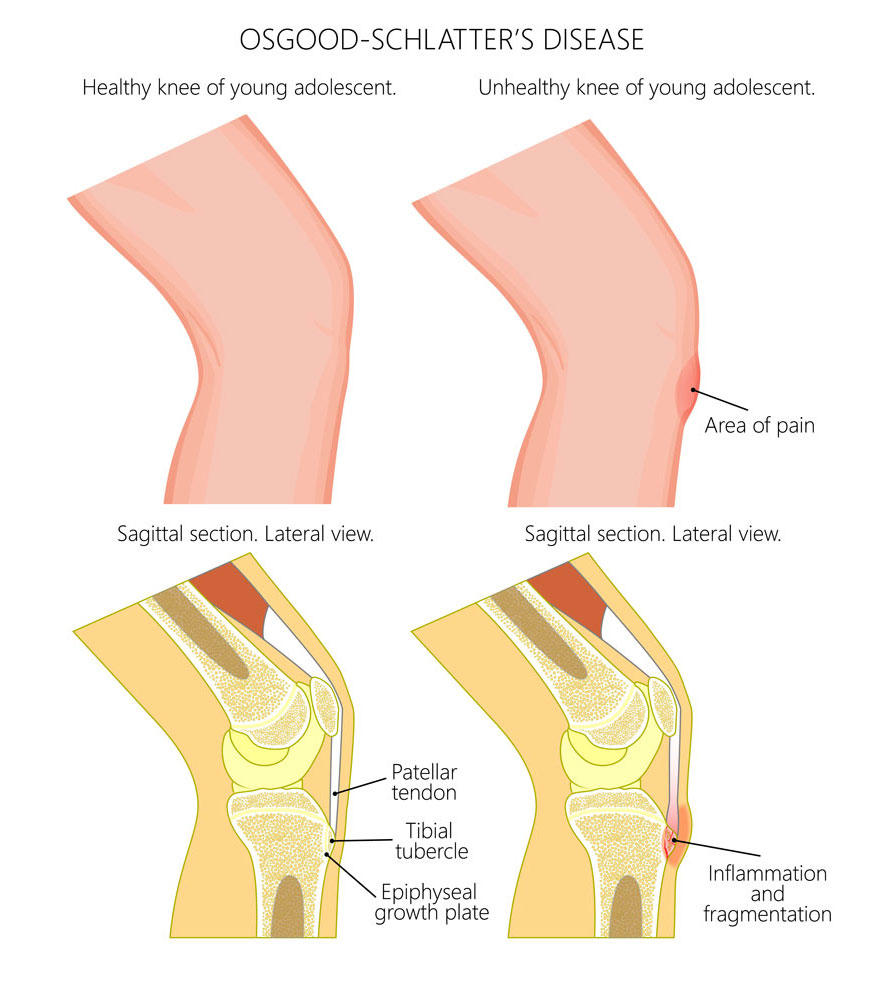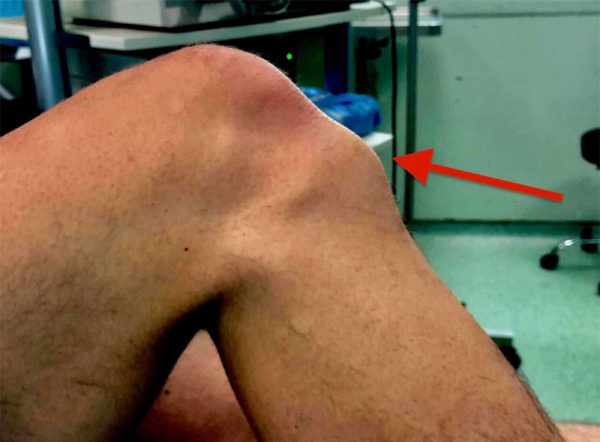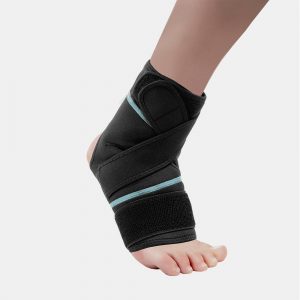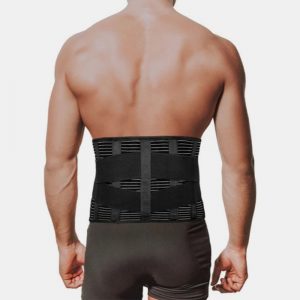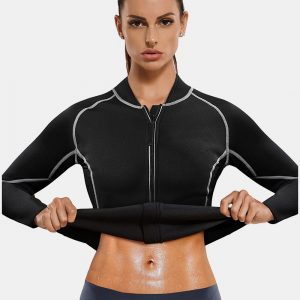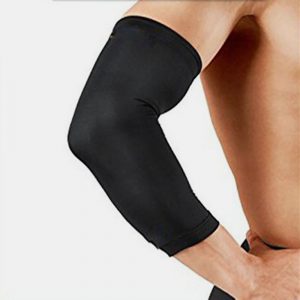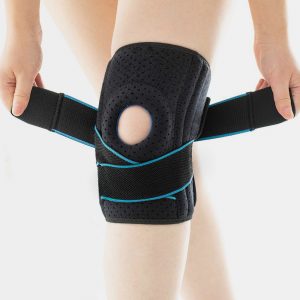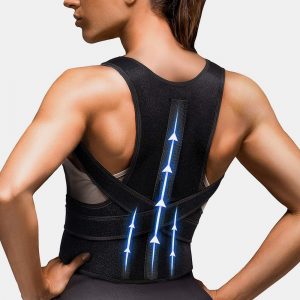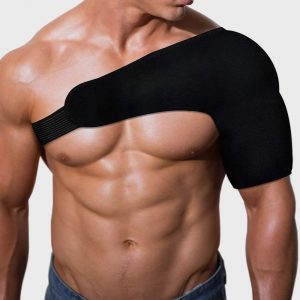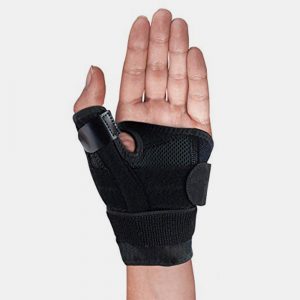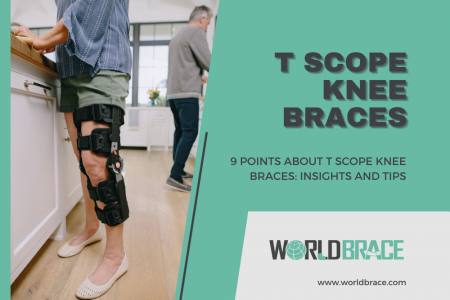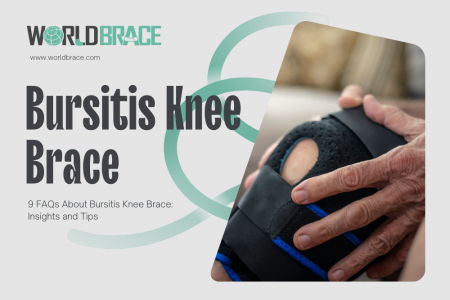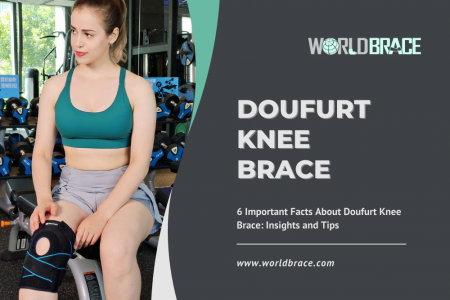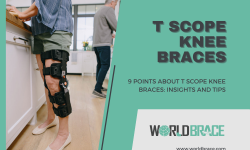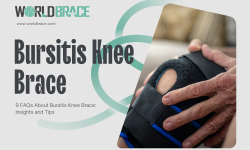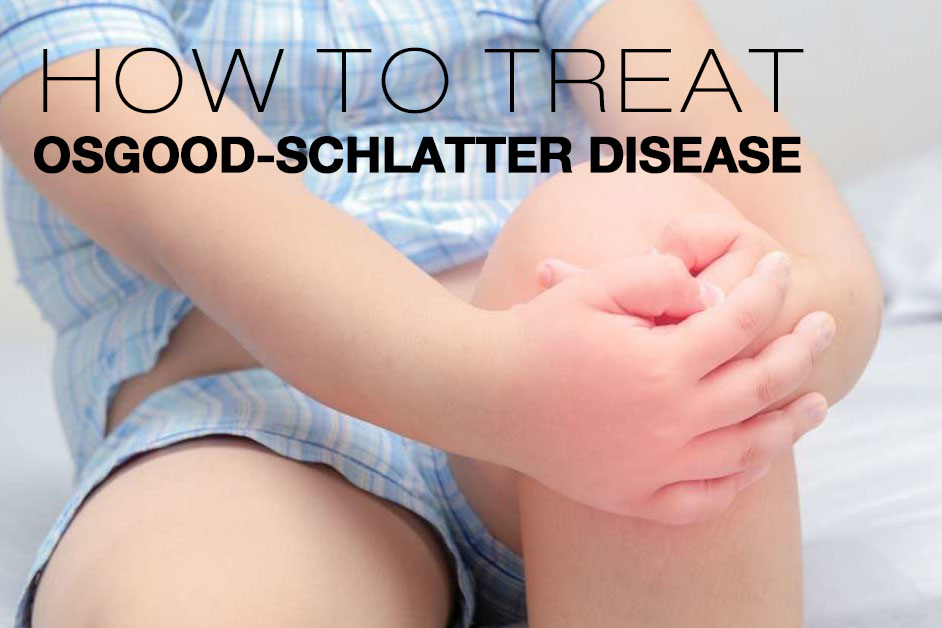
Table of Contents
What is Osgood-Schlatter disease?
Osgood Schlatter’s Disease is a condition that results in pain and swelling in the knee. It is caused by the overuse of the knee joint, leading to inflammation of the tendons and the growth plate. Growth plates are part of cartilage near the bone endings. In an adult, the growth plates turn into a solid bone. Growth plates may also serve as an attachment site for tendons, tissues that connect muscles to bones. The growth plate at the end of the tibia is covered by a bony bump called the tibial tubercle. Osgood-Schlatter disease causes pain at this site.
Physical activity exerts extra stress on bones and muscles. Therefore this condition is most common in adolescents, particularly those who participate in sports that involve running and jumping. This condition can affect both the knees in some cases, although one knee may be worse than the other. Less active adults, however, may also face this problem.
Following are the common symptoms of Osgood-Schlatter disease:
- Pain in knee and leg
- Swelling & tenderness
- Increased warmth under the knee and over the shinbone
- Increased pain with exercise or high-impact activities
- limping after physical activity
How common is Osgood-Schlatter disease?
Osgood Schlatter’s disease is most common in children and adolescents, particularly those who participate in running and jumping sports. It is estimated that the condition affects between 1 and 3 per cent of adolescents. In most cases, simple measures like rest, ice, OTC medication, and stretching and strengthening exercises will help relieve pain. These measures may allow you to return to daily activities.
Mostly, children and adolescents are vulnerable to Osgood-Schlatter disease. Especially when they play sports that add stress to the patellar tendon, activities like running and jumping can cause your leg muscles to pull the patellar tendon. This, in turn, draws on the growth plate.
Sometimes Osgood-Schlatter disease is also termed growing pains. Children are at greater risk of this condition when they go through a growth spurt. The bones, muscles, and tendons shift and grow more extensively during rapid growth. These changes can stress the patellar tendon and the growth plate.
Osgood-Schlatter disease symptom picture
What causes Osgood-Schlatter disease?
The exact cause of Osgood Schlatter’s disease is unknown, but it is thought to be the result of the overuse of the knee joint. This can lead to inflammation of the tendons and the growth plate. Mainly Osgood-Schlatter disease occurs during growth spurts. It’s when the bones, muscles, and tendons change rapidly.
Mostly, children and adolescents are vulnerable to Osgood-Schlatter disease. Especially when they play sports that add stress to the patellar tendon, activities like running and jumping can cause your leg muscles to pull the patellar tendon. This, in turn, draws on the growth plate.
Sometimes Osgood-Schlatter disease is also termed growing pains. Children are at greater risk of this condition when they go through a growth spurt. The bones, muscles, and tendons shift and grow more extensively during rapid growth. These changes can stress the patellar tendon and the growth plate.
How is Osgood-Schlatter disease treated?
Osgood Schlatter’s disease treatment primarily focuses on managing pain and swelling. You should limit your exercise and sporting activities until you can enjoy them without pain and discomfort. Your doctor may suggest you rest for several months. Subsequently, a strength conditioning program may as well be recommended. If you do not have severe pain or a limp, it may be safe to return to exercise and sports.
Your doctor may recommend the following additional treatment methods:
Stretching exercises: Stretching the thigh helps relieve pain and prevent the disease from reoccurring.
Nonsteroidal anti-inflammatory drugs (NSAIDs) help reduce pain and swelling.
Icing: Icing in the affected region may reduce pain and swelling. Don’t apply ice directly to the skin. Instead, use cold packs several times a day.
What is the best knee brace for Osgood-Schlatter disease?
There is no one-size-fits-all answer to this question, as the best knee brace for Osgood Schlatter’s disease will vary depending on the individual’s symptoms and activity level. However, some props that may benefit people with Osgood Schlatter disease include patellar tendon-bearing braces, hinged knee braces, and unloader knee braces.
A good quality knee brace provides extra support after a knee injury and prevents further damage. Moreover, it restricts the mobility of the knee joint, thereby boosting the recovery process. Knee braces by WorldBrace are considered the best to reduce pain and swelling associated with knee injuries.
WorldBrace is a leading provider of braces and other orthopaedic devices. We offer a wide range of products to help people with Osgood Schlatter’s disease, including patellar tendon-bearing mounts, hinged knee braces, and unloader knee braces. For more information, please visit our website or contact us today.
Top 3 Treatments for Osgood Schlatter Disease or Syndrome
faq
How long does Osgood Schlatter's disease last?
Osgood Schlatter’s disease typically lasts for 6 to 12 months. However, some people may experience symptoms for more extended periods.
Can Osgood Schlatter's disease be cured?
There is no cure for Osgood Schlatter’s disease, but the condition usually resolves over time. In some cases, surgery may be necessary to relieve symptoms.

